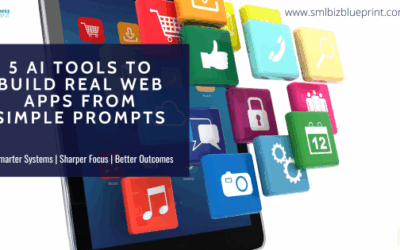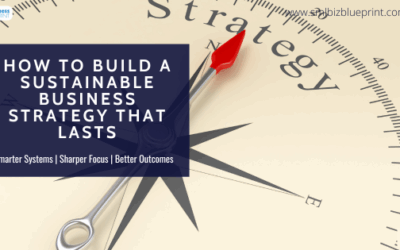In today’s highly competitive B2B landscape, where the stakes are high and the decision-making process is complex, businesses increasingly turn to Account-Based Marketing (ABM) as a powerful strategy to target high-value prospects with precision and impact.
Unlike traditional marketing approaches that cast a wide net, ABM focuses on creating personalised campaigns tailored to the specific needs of individual accounts. This ensures that marketing efforts are seen and resonate deeply with key decision-makers.
This shift towards ABM is a proven method for driving substantial business growth.
In fact, according to a study by ITSMA, 87% of marketers report that ABM delivers higher ROI than any other type of marketing.
This blog post will explore The Power of Account-Based Marketing by delving into its core components—from identifying and targeting high-value prospects to aligning sales and marketing teams for seamless execution.
We’ll also discuss the essential tools and metrics that can help you measure the success of your ABM campaigns and provide practical insights for overcoming common challenges.
Whether new to ABM or looking to refine your strategy, this guide will equip you with the knowledge and tactics needed to succeed in the modern marketing environment.

#1 What is Account-Based Marketing (ABM), and Why Does It Matter?
Account-based marketing (ABM) is a strategic marketing approach focusing on targeting specific high-value accounts rather than casting a wide net to attract a broad audience.
Unlike traditional marketing strategies, which aim to generate as many leads as possible, ABM zeroes in on a select group of accounts most likely to generate significant returns for your business.
This laser-focused approach allows companies to tailor their marketing efforts, create personalised experiences, and align closely with the sales team to drive better results.
At its core, ABM is about quality over quantity. Instead of spreading resources thin across numerous prospects, ABM dedicates time and effort to understanding a few high-value accounts’ unique needs, pain points, and goals.
This deep understanding enables marketers to craft highly personalised campaigns that resonate with key decision-makers within those accounts, increasing the likelihood of engagement and conversion.
ABM has gained significant traction recently, particularly in B2B, where sales cycles are longer and decision-making processes are more complex. Creating tailored messages that address the specific challenges of each account is invaluable in industries where deals can take months or even years to close.
By focusing on the accounts that matter most, businesses can improve their conversion rates and strengthen their relationships with key clients, leading to long-term loyalty and higher lifetime value.
The importance of ABM in today’s marketing landscape cannot be overstated. With increasing competition and shrinking attention spans, businesses must ensure that their marketing messages cut through the noise and reach the right people at the right time.
ABM offers a solution by allowing companies to deliver highly relevant content to a targeted audience, making their marketing efforts more efficient and effective.
Research from SiriusDecisions shows that 92% of B2B marketers consider ABM extremely or very important to their overall marketing efforts, underscoring its critical role in driving business growth.
#2 Identifying High-Value Prospects: The Key to Successful ABM Campaigns
Identifying and selecting the right high-value prospects is the foundation of any successful account-based marketing (ABM) campaign.
These accounts offer the most significant potential for revenue, strategic partnership, and long-term growth. But how do you determine which accounts to target? The process combines data analysis, strategic thinking, and close collaboration between your sales and marketing teams.
Criteria for Identifying High-Value Prospects
To start, it’s essential to establish clear criteria for what constitutes a high-value prospect.
This typically includes factors such as revenue potential, strategic alignment with your business goals, likelihood of conversion, and the prospect’s current engagement level with your brand.
High-value accounts often align closely with your ideal customer profile (ICP) and can deliver significant returns on your marketing investment.
Leveraging Data and Technology
Data plays a crucial role in the identification process. By leveraging customer relationship management (CRM) systems, predictive analytics, and other data-driven tools, you can gain insights into which accounts will most likely convert and offer the highest value.
For instance, analysing past customer behaviour, purchase history, and engagement levels can help you prioritise accounts showing a strong interest in your products or services.
Collaborating with Sales Teams
Effective ABM requires close collaboration between sales and marketing teams. Sales teams often know firsthand which accounts are most valuable and which are in the best position to make a purchase.
By working together, sales and marketing can create a unified list of target accounts that align with business objectives and market opportunities.
Focusing on the Accounts That Matter Most
It’s important to remember that ABM is about quality, not quantity. Instead of spreading your efforts across many prospects, ABM encourages you to focus on the accounts that truly matter.
This concentrated effort allows you to tailor your messaging, content, and outreach strategies to meet the specific needs of each account, ultimately increasing the likelihood of conversion.
Identifying high-value prospects is not just the first step in an ABM campaign—it’s the most critical.
By carefully selecting the right accounts, you set the stage for all subsequent marketing efforts and ensure the efficient use of your resources.
According to a study by Demandbase, 60% of companies that implemented ABM reported a 10% or greater increase in revenue within the first year, highlighting the impact of targeting the right accounts on business growth.
#3 Personalisation in ABM: How to Tailor Your Approach for Maximum Engagement
Personalisation is at the heart of Account-Based Marketing (ABM) and is crucial for effectively engaging high-value prospects.
In an era where generic marketing messages often go unnoticed, personalisation allows you to cut through the noise and connect with your target accounts on a deeper, more meaningful level.
By crafting tailored content and messaging that speaks directly to each account’s specific needs, pain points, and goals, you significantly increase the likelihood of capturing their attention and driving action.
The Importance of Personalization in ABM
In ABM, personalisation goes beyond simply addressing prospects by name. It involves understanding each account’s unique challenges and delivering solutions relevant to their situation.
This level of customisation helps build trust and demonstrates that you’ve done your homework, making your outreach more credible and impactful.
Techniques for Effective Personalization
There are several techniques you can use to personalise your ABM efforts:
Customised Content:
Develop content tailored to each account’s needs. This could include personalised whitepapers, case studies, or blog posts addressing their specific challenges.
Personalised Emails:
Use data and insights to craft email campaigns that speak directly to the individual decision-makers within each account. Highlight how your product or service can solve their unique problems.
Account-Specific Landing Pages:
Create landing pages customised for each target account. These pages should include messaging, offers, and content that resonate with that account’s needs.
Leveraging Data for Personalization
Data is the backbone of effective personalisation. By leveraging CRM data, behavioural analytics, and other tools, you can gain insights into each account’s preferences, challenges, and engagement history.
This information allows you to create highly targeted campaigns that address the precise needs of your high-value prospects, making your marketing efforts more relevant and persuasive.
Maximising Engagement with Targeted Content
The ultimate goal of personalisation in ABM is to maximise engagement. When prospects receive highly relevant content to their specific circumstances, they are more likely to interact with your brand, consider your solutions, and move further down the sales funnel.
This improves conversion rates and strengthens the relationship between your company and its most valuable clients.
According to a report by Evergage, 88% of marketers say that their customers expect personalised experiences, and 63% are frustrated with generic messaging. This highlights the growing demand for personalised marketing and the significant opportunities it presents for businesses using ABM.

#4 Aligning Sales and Marketing Teams for Seamless ABM Execution
One of the cornerstones of a successful Account-Based Marketing (ABM) strategy is the alignment between sales and marketing teams.
For ABM to truly work, these two departments must operate harmoniously, sharing insights, goals, and responsibilities to ensure that every effort is laser-focused on converting high-value accounts.
When sales and marketing are aligned, they can create a unified front that delivers a consistent and compelling message to the target accounts, ultimately driving better results.
The Importance of Sales and Marketing Alignment
In traditional marketing approaches, sales and marketing often work in silos, with limited interaction and collaboration. However, ABM requires a different approach.
Since ABM targets specific high-value accounts, the sales team’s input is invaluable in understanding these accounts’ needs, challenges, and decision-making processes.
Conversely, marketing brings creativity and strategy to craft personalised campaigns that resonate with these prospects. When these teams work together, they can develop more effective strategies aligned with the overall business objectives.
Strategies for Fostering Alignment
Achieving alignment between sales and marketing teams involves several key strategies:
Shared Goals:
Both teams should clearly understand what success looks like in an ABM campaign. This means setting common goals, such as revenue targets, engagement metrics, or conversion rates, for which both sales and marketing are accountable.
Regular Communication:
Frequent and open communication is essential for maintaining alignment. Regular meetings, joint planning sessions, and shared project management tools can ensure everyone is on the same page.
Integrated Tools:
It is crucial to use integrated tools that both sales and marketing teams can access to share data, track progress, and measure results. CRM systems, marketing automation platforms, and ABM-specific software can help facilitate this collaboration.
The Benefits of a Unified Approach
When sales and marketing teams are aligned, the benefits are significant. First and foremost, it creates a more cohesive customer experience. Prospects receive consistent messaging across all touchpoints, from initial outreach to follow-up communications. This consistency builds trust and reinforces the value proposition, making the target account more likely to move forward in the sales process.
Additionally, alignment ensures that marketing efforts are closely tied to sales objectives. This means that marketing campaigns are not just generating leads but are focused on generating the right leads—those most likely to convert into high-value customers.
Sales teams, in turn, are better equipped to close deals because they are armed with marketing insights and resources.
According to MarketingProfs, companies with aligned sales and marketing teams achieve 38% higher sales win rates. This statistic underscores the significant impact that alignment can have on the success of an ABM strategy.
#5 Tools and Technologies That Drive Effective Account-Based Marketing
The success of an Account-Based Marketing (ABM) strategy hinges on the creativity and precision of your campaigns and on the tools and technologies that support them.
In today’s data-driven world, leveraging the right tools can make all the difference in how efficiently and effectively you execute your ABM strategy.
The right technology stack enables your teams to work smarter and achieve better results, from identifying high-value accounts to personalising outreach and measuring success.
Essential Tools for ABM Success
To execute an ABM strategy effectively, it’s crucial to have tools covering the entire ABM process, from account selection to campaign execution and performance measurement.
Some of the key categories of tools include:
Customer Relationship Management (CRM) Systems:
A robust CRM system is the foundation of your ABM efforts. It helps you manage and organise account data, track interactions, and gain insights into your high-value prospects’ buying behaviours and preferences. Tools like Salesforce or HubSpot CRM are popular for managing ABM campaigns effectively.
Marketing Automation Platforms:
These platforms enable you to automate and scale your ABM campaigns. They also allow for the personalisation of content, automated email marketing, and streamlined workflows. Marketo Engage and Pardot are widely used for their powerful automation capabilities that are tailored to ABM needs.
ABM-Specific Software:
ABM platforms like Demandbase or Terminus are explicitly designed to support ABM strategies. They offer features such as account-based advertising, personalised website experiences, and detailed analytics that help you target and engage the correct accounts.
Predictive Analytics Tools:
Predictive analytics tools like 6sense or Everstring help you identify which accounts will most likely convert based on data patterns and behaviours. These tools use AI and machine learning to predict future buying behaviours, allowing you to prioritise the most promising accounts.
How These Tools Enhance ABM Execution
Integrating these tools into your ABM strategy allows for a more seamless and efficient campaign execution.
For instance, by using CRM data in conjunction with marketing automation, you can create highly personalised and targeted email campaigns that are automatically triggered based on specific actions your target accounts take.
ABM-specific platforms further enhance this process by enabling you to deliver personalised content across multiple channels, ensuring consistent messaging and maximising engagement.
Moreover, predictive analytics tools provide valuable insights that help you refine your account selection process, ensuring that your efforts are focused on the accounts with the highest likelihood of conversion.
This data-driven approach improves the accuracy of your targeting and enhances the overall effectiveness of your ABM campaigns.
Choosing the Right Tools for Your Business
Selecting the right tools for your ABM strategy depends on several factors, including the size of your business, your budget, and the specific needs of your marketing and sales teams.
Choosing tools that integrate well with each other and your existing technology stack is vital to ensure a smooth workflow and effective data sharing.
Additionally, consider tools that offer scalability so your ABM efforts can grow alongside your business.
According to Forrester Research, companies that fully embrace ABM tools and technologies report a 50% increase in revenue pipeline and a 200% increase in the number of accounts engaged. This demonstrates the powerful role that the right tools can play in driving the success of an ABM strategy.
#6 Measuring Success: Key Metrics to Track in Your ABM Strategy
Tracking the right metrics is essential to ensuring the success of your Account-Based Marketing (ABM) strategy.
Unlike traditional marketing approaches, where the volume of leads generated might measure success, ABM focuses on the quality and depth of engagement with high-value accounts.
The right metrics will provide actionable insights into how well your ABM efforts are performing and where adjustments may be needed to optimise outcomes.
Key Metrics for ABM Success
Several critical metrics should be at the forefront of your ABM measurement strategy:
Account Engagement:
This metric tracks how actively your target accounts engage with your content, campaigns, and brand. It includes interactions such as email opens, content downloads, website visits, and event attendance.
High engagement levels indicate that your messaging resonates with the account and that they are moving through the buying journey.
Pipeline Velocity:
Pipeline velocity measures the speed at which accounts move through your sales funnel. This metric is crucial for understanding the efficiency of your ABM strategy in converting engaged accounts into qualified opportunities and, eventually, customers.
A faster pipeline velocity suggests that your ABM efforts effectively accelerate the sales process.
Account Penetration:
This metric assesses the extent to which you’ve successfully engaged with different stakeholders within a target account. ABM often involves multiple decision-makers, and reaching a broad audience within an account is vital to winning their business.
Account penetration metrics track the number of individuals within a target account who are engaging with your content and sales teams.
Revenue Contribution:
ABM is ultimately about driving revenue from high-value accounts. Revenue contribution metrics focus on how much revenue can be attributed to your ABM efforts.
This can be tracked by comparing the revenue generated from targeted accounts before and after implementing ABM or by monitoring the overall revenue growth in accounts engaged through ABM campaigns.
Return on Investment (ROI):
Measuring the ROI of your ABM campaigns involves comparing the cost of your ABM efforts (including tools, resources, and time) against the revenue generated from those efforts.
A high ROI indicates that your ABM strategy delivers strong financial returns and is worth continuing or scaling.
How to Use These Metrics Effectively
To get the most value from these metrics, it’s essential to establish clear benchmarks and goals at the outset of your ABM campaigns. Regularly reviewing these metrics allows you to identify trends, understand what’s working, and make data-driven decisions to optimise your strategy.
For example, if account engagement is high but pipeline velocity is slow, you may need to adjust your sales approach or offer more compelling calls to action.
Tracking and Reporting Tools
Using the right tools to track and report on these metrics is essential for gaining accurate and timely insights. CRM systems, marketing automation platforms, and ABM-specific software often include built-in analytics features that allow you to monitor these metrics in real time.
Dashboards and reports can be customised to highlight the metrics most relevant to your ABM goals, making it easier for your teams to stay informed and take action when necessary.
According to SiriusDecisions, companies that effectively measure and track their ABM metrics see a 30% increase in revenue attributed to ABM initiatives. This demonstrates the importance of data-driven decision-making in maximising the impact of an ABM strategy.

#7 Overcoming Common Challenges in Account-Based Marketing
Implementing an Account-Based Marketing (ABM) strategy can be highly rewarding, but it’s not without its challenges. From aligning sales and marketing teams to personalising content at scale, businesses often encounter obstacles that can hinder the effectiveness of their ABM campaigns.
Understanding these challenges and how to overcome them is crucial for ensuring the success of your ABM efforts.
Aligning Sales and Marketing Teams
One of the most common challenges in ABM is achieving alignment between sales and marketing teams. Since ABM requires close collaboration between these departments, misalignment can lead to inconsistent messaging, missed opportunities, and inefficiencies in targeting high-value accounts.
The key to overcoming this challenge is establishing shared goals, fostering regular communication, and using integrated tools that enable both teams to work together seamlessly.
Data Integration and Management
ABM relies heavily on data to identify target accounts, personalise messaging, and measure success. However, managing and integrating data from various sources can be complex, especially for large organisations.
To overcome this challenge, businesses must invest in robust data management solutions and ensure their CRM, marketing automation and ABM platforms are fully integrated.
This allows for a more holistic view of each account and ensures that marketing and sales teams have access to the same data.
Personalisation at Scale
Personalisation is a critical component of ABM, but delivering personalised experiences at scale can be challenging, mainly when targeting many accounts.
Businesses can address this using marketing automation tools and AI-driven solutions, which allow dynamic content generation and personalised messaging across multiple channels.
Additionally, segmenting accounts based on similar characteristics can help create tailored content that resonates with each segment.
Measuring ABM Success
Another significant challenge is accurately measuring the success of ABM campaigns.
Traditional marketing metrics may need to fully capture the effectiveness of ABM efforts, making it challenging to gauge ROI. To overcome this, businesses should focus on ABM-specific metrics such as account engagement, pipeline velocity, and account penetration.
Using these metrics and advanced analytics tools can provide a clearer picture of how well your ABM strategy is performing.
Resource Allocation
ABM can be resource-intensive, requiring significant time and effort to execute effectively. This challenge is particularly pronounced for smaller businesses or those with limited marketing resources.
To overcome this, businesses should prioritise high-value accounts and focus their efforts where they can have the most impact.
Additionally, leveraging technology to automate repetitive tasks can free up resources for more strategic activities.
According to Demand Gen Report, 46% of B2B marketers say that data quality is their biggest challenge in executing ABM, underscoring the need for effective data management solutions as a foundation for ABM success.
#8 Scaling ABM: How to Expand Your Strategy Without Losing Focus
As your Account-Based Marketing (ABM) strategy begins to deliver results, the next step is to scale these efforts across a broader range of accounts. However, scaling ABM comes with its challenges, particularly the risk of diluting the personalised and targeted approach that makes ABM so effective.
To scale successfully, businesses must balance expanding their reach and maintaining the precision and personalisation that drive success.
Maintaining Personalization at Scale
One of the biggest challenges in scaling ABM is ensuring that the level of personalisation doesn’t diminish as the number of targeted accounts increases. Personalisation is the cornerstone of ABM, and losing this focus can lead to less effective campaigns.
To overcome this, businesses can use segmentation techniques to group similar accounts and create targeted campaigns for each segment. This allows for personalised messaging at scale without compromising the relevance and specificity that ABM requires.
Leveraging Automation and AI
Automation and AI are powerful tools that can help businesses scale their ABM efforts efficiently. Companies can focus their resources on more strategic activities by automating repetitive tasks such as email marketing, data analysis, and content distribution.
AI-driven solutions can also help personalise content at scale by dynamically adjusting messaging based on real-time data and account behaviour. This ensures that even as your ABM strategy scales, each account receives tailored content that resonates with their unique needs.
Prioritising High-Potential Accounts
As you scale your ABM efforts, it’s crucial to prioritise high-potential accounts that are most likely to deliver significant returns. Not all accounts will have the same value, so focusing your resources on those with the highest potential ensures that your expanded efforts remain effective.
Using predictive analytics tools can help identify which accounts should be prioritised, allowing your teams to concentrate on those that offer the most significant opportunity for growth.
Maintaining Cross-Functional Alignment
Scaling ABM requires ongoing alignment between sales, marketing, and other key departments. As the number of targeted accounts grows, it is essential to ensure that all teams work together seamlessly to maintain a consistent and cohesive approach.
Regular communication, shared goals, and integrated tools are essential for keeping everyone aligned and focused on the ABM strategy’s objectives.
Measuring and Adjusting Your Strategy
As your ABM strategy scales, measuring its effectiveness and continually making adjustments is essential. Tracking key metrics such as account engagement, pipeline velocity, and revenue contribution allows you to assess the impact of your scaled efforts and identify improvement areas.
Regularly reviewing these metrics ensures that your ABM strategy remains on track, even as it expands to include more accounts.
According to Terminus, companies that effectively scale their ABM strategies see a 200% increase in revenue from target accounts. This highlights the potential benefits of expanding your ABM efforts while maintaining a focused and strategic approach.
#9 ABM for Small Businesses: Leveraging Big Impact with Targeted Efforts
Account-based marketing (ABM) isn’t just for large enterprises with massive marketing budgets; it’s a highly effective strategy that can also deliver significant returns for small businesses.
Focusing on a select group of high-value accounts can help small businesses maximise their marketing resources, drive meaningful engagement, and achieve impressive results even with a limited budget.
The key is to be strategic, prioritise the most impactful accounts, and leverage the tools and tactics that make ABM scalable and efficient.
Focusing on Quality Over Quantity
For small businesses, every marketing dollar counts. ABM’s focus on quality over quantity is particularly well-suited to small businesses, allowing them to allocate their limited resources toward the accounts that matter most.
Instead of spreading efforts thin across a broad audience, ABM enables small businesses to zero in on fewer high-value prospects. By crafting personalised and relevant campaigns for these accounts, small businesses can increase their chances of conversion and maximise their return on investment.
Cost-Effective Tools for ABM
One of the challenges small businesses face is the perceived cost of implementing an ABM strategy. However, many cost-effective tools can help small businesses execute ABM without breaking the bank.
For example, free or low-cost CRM systems like HubSpot CRM can help manage account data and track engagement, while marketing automation platforms like Mailchimp offer affordable email marketing and campaign automation solutions.
Additionally, many ABM-specific platforms offer tiered pricing or scaled-down versions accessible to small businesses.
Personalisation on a Budget
Personalisation is a critical component of ABM, but it doesn’t have to be expensive. Small businesses can achieve high levels of personalisation by focusing on their target accounts’ key pain points and needs.
Simple tactics like personalised emails, tailored content, and custom landing pages can significantly impact without requiring a significant investment.
Small businesses can leverage their existing data to inform their messaging, creating highly relevant and compelling campaigns that resonate with prospects.
Prioritising High-Value Accounts
For small businesses, prioritising the right accounts is crucial. With limited resources, focusing on the accounts with the highest revenue and long-term growth potential is essential.
Using predictive analytics tools, even those that are low-cost or offer free trials, can help small businesses effectively identify and prioritise these accounts.
Concentrating their efforts on the most promising prospects can help small businesses maximise their ABM strategy and drive meaningful results.
Measuring Success and Scaling Gradually
As with any marketing strategy, measuring success is vital to understanding what works and where improvements can be made. Small businesses should focus on key ABM metrics such as account engagement, pipeline velocity, and conversion rates to track the effectiveness of their campaigns.
Starting small and scaling gradually allows small businesses to refine their approach and invest more resources as they see positive returns.
According to a study by TOPO, small businesses using ABM report a 30% increase in deal size, demonstrating the significant impact that a targeted, account-based approach can have, even with limited resources.
Conclusion
As we look to the future, Account-Based Marketing (ABM) is poised to become even more central to businesses’ strategies for building solid, long-lasting relationships with high-value accounts.
The evolution of technology, data analytics, and AI is set to enhance ABM’s effectiveness further, making it an indispensable tool for businesses of all sizes.
The companies that stay ahead of these trends and continue to refine their ABM strategies will be well-positioned to achieve sustainable growth and maintain a competitive edge in their markets.
The Role of AI and Automation
Artificial intelligence and automation are already transforming how businesses execute ABM, and this trend is only set to accelerate.
AI can analyse vast amounts of data to identify patterns and predict which accounts are most likely to convert, allowing businesses to focus their efforts where they will have the most impact.
Automation tools will continue to play a crucial role in scaling ABM efforts, enabling businesses to personalise their outreach at scale without sacrificing the quality and relevance of their campaigns.
Enhanced Data Integration and Analytics
As businesses continue to collect more data from various sources, the ability to integrate and analyse this data will become increasingly important.
The future of ABM will likely see more advanced analytics tools that can provide deeper insights into account behaviour and preferences. These insights will allow for even more precise targeting and personalised engagement, leading to higher conversion rates and stronger relationships with key accounts.
The Growing Importance of Customer Experience
In the coming years, the customer experience will be a crucial differentiator for businesses practising ABM. Companies must focus on creating seamless and positive experiences at every touchpoint, from initial outreach to post-sale support.
ABM strategies prioritising customer experience will help acquire new accounts and retain and expand existing relationships, leading to greater customer lifetime value.
ABM for All Business Sizes
While ABM has traditionally been associated with large enterprises, more small and mid-sized businesses will adopt it as a core part of their marketing strategy in the future.
With the availability of cost-effective tools and the ability to scale efforts gradually, businesses of all sizes can leverage the power of ABM to target high-value accounts and achieve significant growth.
Continuous Adaptation and Innovation
The future of ABM will require businesses to adapt and innovate their strategies continuously. As new technologies emerge and customer expectations evolve, businesses must adapt.
Those who can quickly adopt new tools, refine their targeting, and personalise their engagement will thrive in an increasingly competitive landscape.
Looking Ahead: Preparing for the Future of ABM
Businesses should invest in the right technology and data analytics tools to prepare for the future of ABM.
Building cross-functional solid teams that can collaborate effectively is also essential for success. Additionally, businesses should deliver exceptional customer experiences that build trust and loyalty among their target accounts.
According to Gartner, by 2025, 75% of B2B organisations will use ABM as part of their overall marketing strategy, highlighting the growing importance of this approach in driving business success.
FAQs
Q1. What is Account-Based Marketing (ABM), and why is it important?
A1: Account-Based Marketing (ABM) is a strategic approach focusing on targeting specific high-value accounts rather than casting a wide net to attract a broad audience. By creating personalised campaigns tailored to the needs of individual accounts, ABM helps businesses build stronger relationships, improve engagement, and drive higher revenue. It’s particularly effective in B2B marketing, where sales cycles are longer, and decision-making involves multiple stakeholders.
Q2. How can small businesses benefit from ABM, and is it cost-effective for them?
A2: Small businesses can significantly benefit from ABM by focusing their limited resources on high-value accounts, offering the greatest revenue and growth potential. ABM allows small businesses to create targeted, personalised campaigns that are more likely to convert, making it a cost-effective strategy. Affordable tools like HubSpot CRM and Mailchimp can help small businesses implement ABM without a significant financial investment.
Q3. What are the key metrics to track in an ABM strategy?
A3: The key metrics to track in an ABM strategy include account engagement, pipeline velocity, account penetration, revenue contribution, and return on investment (ROI). These metrics help businesses measure the effectiveness of their ABM efforts and identify areas for optimisation. By regularly reviewing these metrics, companies can ensure their ABM strategy is aligned with their goals and deliver the desired results.
Q4. How can businesses scale their ABM strategy while maintaining personalisation?
A4: To scale ABM without losing personalisation, businesses can use segmentation techniques to group similar accounts and create targeted campaigns for each segment. Leveraging automation and AI tools can also help maintain personalisation at scale by dynamically adjusting messaging based on real-time data and account behaviour. Prioritising high-potential accounts ensures that efforts remain focused and effective as the strategy expands.
Q5. What are the common challenges in implementing ABM, and how can they be overcome?
A5: Common challenges in implementing ABM include aligning sales and marketing teams, managing and integrating data, personalising content at scale, measuring success, and resource allocation. These challenges can be overcome by fostering cross-functional alignment, investing in robust data management solutions, leveraging automation and AI, focusing on ABM-specific metrics, and prioritising high-value accounts to ensure resource efficiency.
Q6. How does ABM differ from traditional marketing strategies?
A6: Unlike traditional marketing strategies that aim to generate a high volume of leads, ABM focuses on quality over quantity by targeting a select group of high-value accounts. ABM involves creating highly personalised campaigns that resonate with specific accounts, leading to stronger relationships, higher engagement, and better conversion rates. This approach is particularly effective in B2B environments where the sales process is complex and involves multiple decision-makers.
Q7. What role does technology play in the success of an ABM strategy?
A7: Technology plays a crucial role in the success of an ABM strategy by enabling businesses to identify target accounts, personalise campaigns, automate repetitive tasks, and measure the effectiveness of their efforts. Tools like CRM systems, marketing automation platforms, ABM-specific software, and predictive analytics are essential for executing ABM efficiently and at scale. These technologies help businesses optimise their strategies and achieve better results.
Other Reading
What Every Business Owner Needs to Know About Scaling for Long-Term Success




